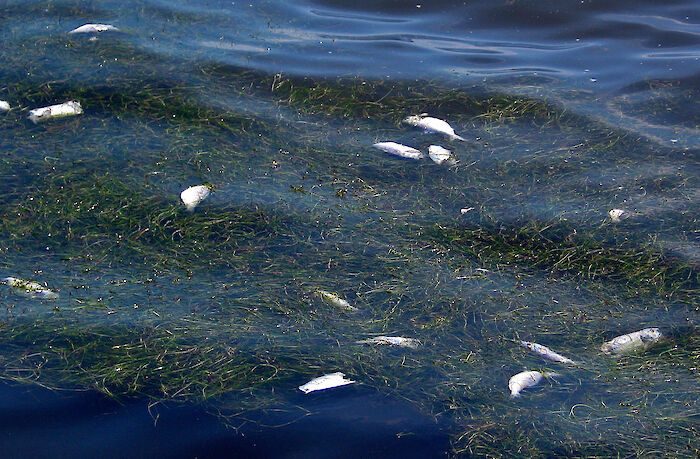
The oxygen dissolved in water is critical to the survival of fish and shellfish living in it. All of the living creatures in the water need oxygen to survive but as dissolved oxygen levels decrease, it becomes harder for animals to get the oxygen they need to survive. Low concentrations of dissolved oxygen is often the result of eutrophication, which occurs when there are too many nutrients (such as nitrogen and phosphorus) in the water which cause dense algal blooms to grow. When the algae die and decompose, the decomposition process uses up dissolved oxygen in the water, reducing the oxygen available for fish, and other organisms, which may become stressed or even die.
How is it measured?
Dissolved oxygen was measured at approximately 159 stations, up to 7 times between June and September, using a water quality probe from the bottom to the surface of the water column at one meter intervals. The proportion of time that dissolved oxygen was below the threshold at each station was calculated and then spatially averaged into reporting regions.
2024 bay data provided by the Chesapeake Bay Program and accessed through the DataHub application: https://datahub.chesapeakebay.net/WaterQuality
Threshold levels
| Designated Use | Season | Criteria Thresholds (mg L-1)‡ |
|---|---|---|
| Open Water | Jun-Sep | ≥5.0 |
| Deep Water | Jun-Sep | ≥3.0 |
| Deep Channel | Jun-Sep | ≥1.0 |
‡ U.S. Environmental Protection Agency (2003)
